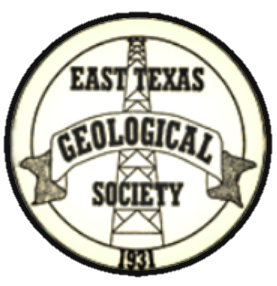JANUARY 2018 LUNCHEON MEETING
Dale M. Short
presents
Tectonics of the Sabine Island
11:30 AM Wednesday, January 24, 2018
at the Cascades
4511 Briarwood Road
Tyler, TX 75709
Cost: $20
BIOGRAPHY
Dale is a retired geologist and geophysicist living in Tyler Texas. He was raised in the eastern side of the state of Washington. Surrounded by the Miocene flood basalts he developed an early interest in geology. Agate hunting trips on the Columbia river and mining garnets with his father in Idaho added to his curiosity about earth science.
Dale studied geology at Washington State University, graduating with a bachelor’s degree in 1973. He moved to Houston and went to work for Western Geophysical, where he worked for five years. He left Western to work as a geologist for Subsurface Disposal Inc., permitting, drilling and maintaining deep industrial waste disposal wells.
In 1980, Dale went to work with Conoco as a geophysicist. Conoco trained explorationists in the integration of both geology and geophysics which characterized Dale’s approach to exploration throughout the rest of his career. While at Conoco, Dale worked the south Texas Lobo and Frio trends, the Oriente Basin in Ecuador, the Williston Basin in North Dakota and Montana, and the Uinta Basin in Utah. After nearly 15 years with Conoco, Dale was laid off. In Spring of 1995, he and his wife Gay moved to Tyler, Texas and started Options Geophysical. He later worked with Al Jasper at Five Star Exploration for nearly 6 years. In late 2001, Dale joined EOG Resources in Corpus Christi Texas.
While in Corpus with EOG, Dale worked the deep Wilcox trend and then, with the application of a geologic model developed within the Corpus division, discovered gas in low stand sands in the Reklaw Shale of Starr and Jim Hogg counties that he named T Patch Field after the Texas Army National Guard brigade he served in as a paratrooper. Later development of Reklaw highstand systems tract sands extended the play 20 miles to the south, and identifying over 50 BCF net to EOG.
In 2008, Dale was able to transfer to the Tyler division of EOG. There, he worked the Haynesville shale of northern Louisiana and east Texas. He also worked Cotton Valley sands of north Louisiana and the “Eagle Ford” shale – otherwise known as the Lower Woodbine Organic Shale – thank you Rich Adams.
In 2015, Dale retired from EOG. He started an office to conduct research on the Sabine Island and consult, doing business as East Texas Geoseismic.
Dale also served for two years as the President of the East Texas Geological Society from September of 2014 through May of 2016.
ABSTRACT
The Sabine Island is a tectonic feature located on the southern end of the area known as the Sabine Uplift in East Texas. The island has a different tectonic history compared to that of surrounding areas. The objective of this investigation was to document the apparent vertical movement of the island. This is a new model, and is meant to stimulate thought and additional research. The current study focuses only on the Texas portion of Sabine Island, leaving the Louisiana portion of the Island for future study. Previous work done by the author indicates that the Louisiana portion of the Sabine Island has a similar tectonic history.
The Sabine Island and several other “basement highs” were emergent during the deposition of the Jurassic salt, leaving either a very thin salt (~100’), such as in the vicinity of the “Strickland Ridge” along the Shelby – Panola county line, or absence of salt as found on the Sabine Island, and in northeast Shelby county in the vicinity of Juaquin Field. These areas remained high during the deposition of the Smackover Formation up to the Valanginian unconformity. After the transgressive systems tract deposition of the B Lime occurred, the Sabine Island area subsided and created accommodation space for a thicker section of the marine to paralic Travis Peak siliciclastic section. A reversal of motion on the Sabine Island block occurred during the deposition of the Cretaceous carbonate section and is illustrated by apparent reefing in the section above the Rodessa and possibly up into the Georgetown and Goodland intervals. Another reversal occurred during the deposition of the Austin Chalk that can be demonstrated by thickening of that interval over the “Island”. The final reversal documented in this paper is between the top of Austin Chalk and the Chicxalub tsunami event near the K/T unconformity.
Anecdotal evidence of higher order relative sea level fluctuation is presented as a model derived from seismic data. The relationship of this model to the movement of the “Island” is not specifically relevant, but the model is necessary in order to understand horizon interpretations between the Smackover Formation and other stratigraphic surfaces that are not represented in the “Haynesville” Basin and to demonstrate preservation of sediment eroded by the Valanginian unconformity.
